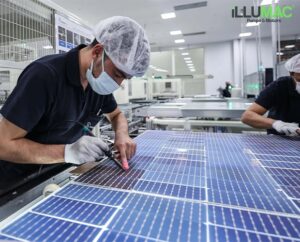When looking for solar financing, many people simply look for the loan with the lowest interest rate and the smallest down payment. While this is a valid approach in theory, in practice you may be falling for a deal that is too good to be true.
This is due to the fact that some financing options appear to have simple terms but actually have high upfront and ongoing fees.
These hidden fees can significantly increase your monthly payments and cost you thousands of dollars over the life of the loan. As a result, it is critical that you understand what these fees are and how much they will cost you.

What Exactly Is a Hidden Fee?
While many hidden fees are small, if charged on a regular basis, the accumulated amount can have a significant impact on your account. Some hidden fees can have a significant impact on your loan and cause financial problems.
5 hidden fees to be aware of

1. initiation fee
Loan providers use the origination fee to cover processing costs, and it is typically charged as a percentage of the total amount borrowed. However, while conventional loan origination fees typically range between 1% and 5%, some solar loan companies charge origination fees of up to 30%.
The fact that many borrowers are unaware of how much they will be charged until after the loan has been approved makes this a sneaky and often predatory charge.
To put this in context, a $20,000 solar loan could result in an additional $6,000 in origination fees. In comparison, a traditional $20,000 bank loan would only have a $200-$1,000 origination fee.
Lenders use origination fees to reduce risk and increase profits. They can advertise a lower interest rate without losing money by including origination fees with their loan options. Solar financing companies can then mislead borrowers into taking out a loan that isn’t as appealing as it first appears.
For example, if you take out a $20,000 five-year solar loan advertised as ‘zero interest’ but it includes a 30% origination fee, you will end up repaying more than a loan with a 10% interest rate.
Because some solar loan providers charge such high origination fees, always read the fine print of any loan application. If you want more transparency, a traditional bank loan may be a better option.
2. Fee for application
Personal loan application fees are typically small, flat fees ranging between $20 and $50, depending on the provider. Some lenders, however, will charge hundreds of dollars as an application fee, which you should be aware of.
This type of fee may be inconvenient, but it is understandable as long as it is charged at standard rates. It reimburses lenders for administrative costs as well as fees for obtaining a copy of your credit report.
3. Penalty for early payment
When you pay off a loan before the end of the term, you may be charged a prepayment fee. As an example, if you take out a 10-year loan and pay it off in five years, some solar loan providers may charge you a prepayment penalty.
Prepayment penalties are used to recoup the profits that the lender loses when a loan term is cut short.
Prepayment penalties can range between 1% and 5% of the original loan amount. So, if you’re thinking about paying off your loan early, double-check your loan information.
4. Penalty for late payment
If you do not make a timely repayment, you will be charged a late payment fee. Almost every solar loan, regardless of the lender, includes late payment penalties.
In most cases, a late payment fee is either a flat amount or a small percentage of your repayment amount. The flat fee is typically between $25 and $50, and the percentage-based charge should not exceed 5% of your repayment amount.
The main reason lenders charge late payment penalties is to encourage borrowers to make timely payments.
5. The annual fee
In most cases, this fee is a one-time fee that is incurred once a year. The amount will vary depending on the lender, but it will usually not be more than $100 per year.

How to Avoid Hidden Solar Loan Fees
The origination fee is the worst hidden fee associated with solar loans and should be avoided at all costs.
Some of the other fees we’ve discussed are more common and should not be taken seriously. For example, it’s unlikely that you’ll come across a loan that doesn’t impose a late payment penalty for missed payments.
To avoid paying more than you bargained for, follow these guidelines:
Compare and research as many solar loan options as you can to find the best one for your needs.
Always read the fine print on any loan you apply for.
Ask as many questions as you can of potential lenders.
Before signing, discuss any questionable terms or fees with your lender.
- Take out a loan only if you are confident in your ability to repay it.






